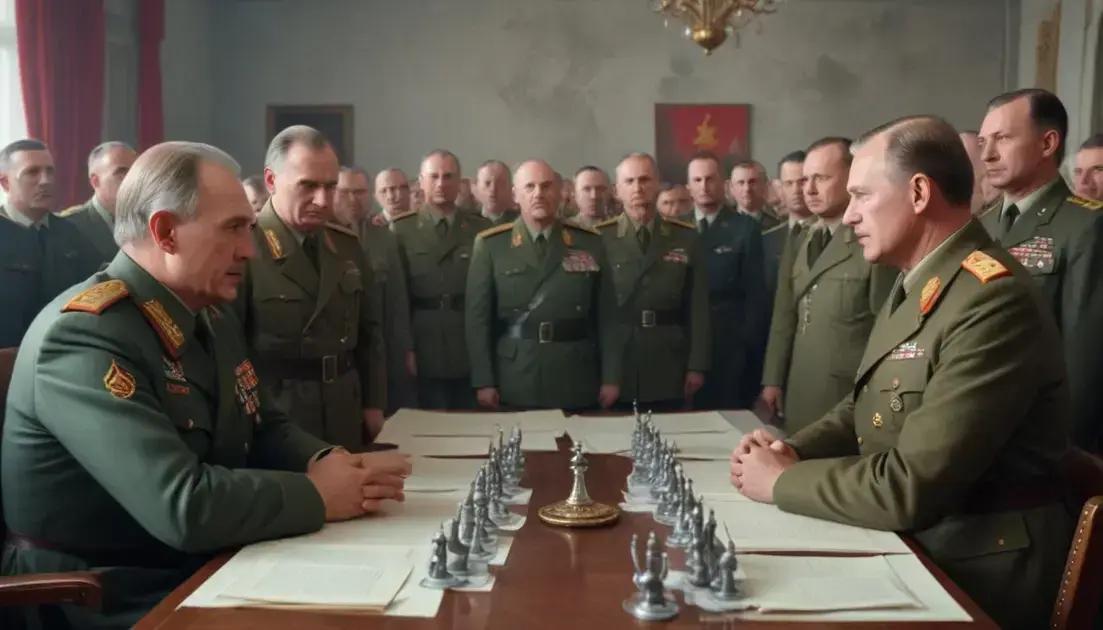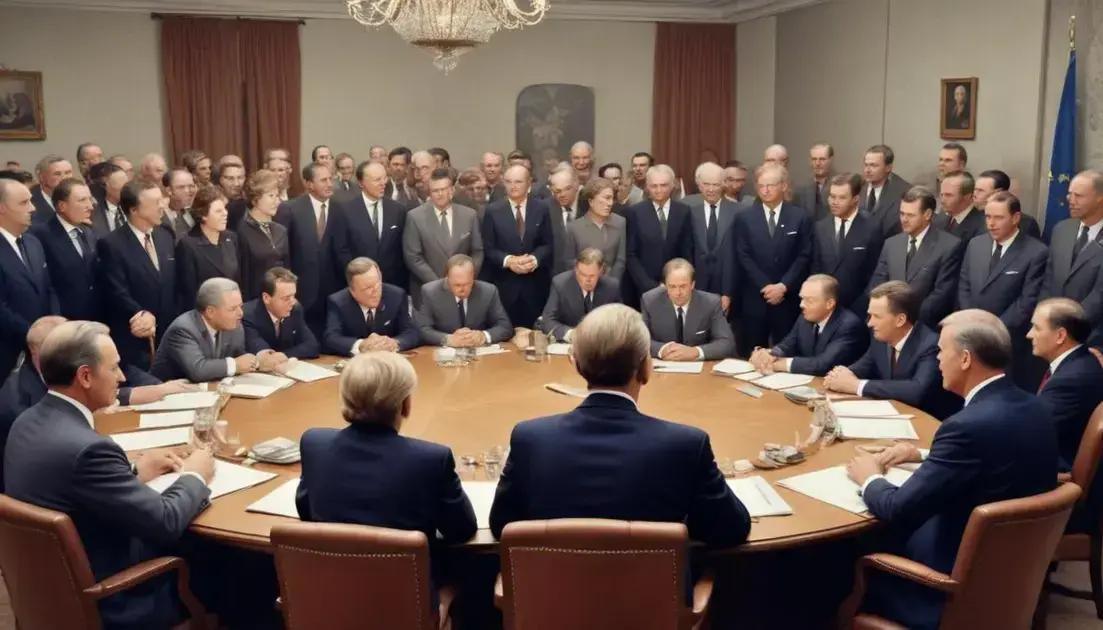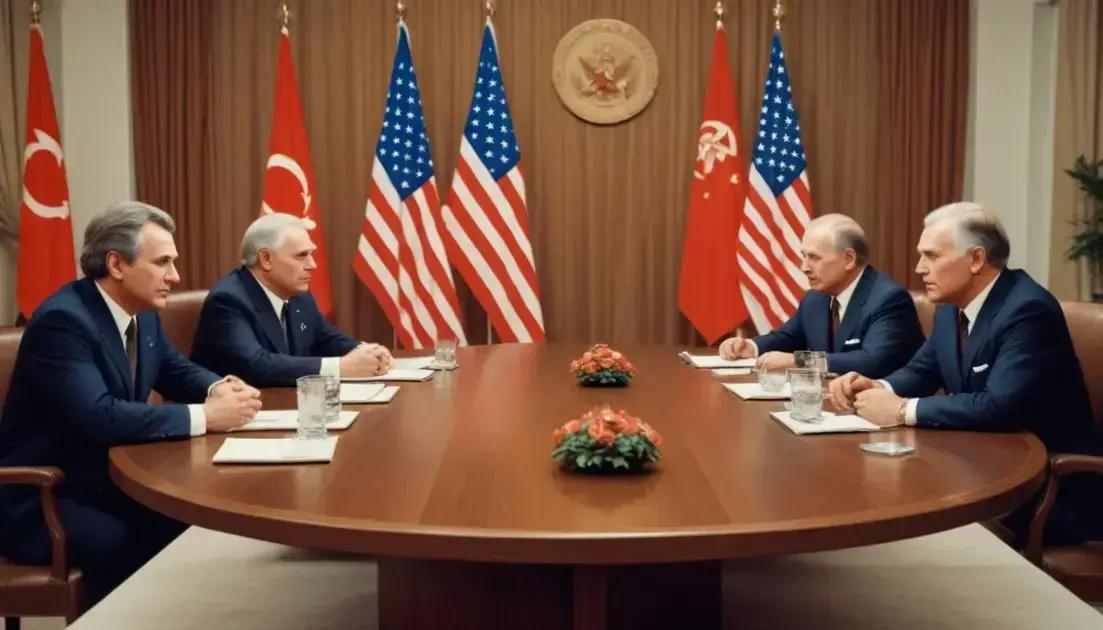
Warsaw Pact: Soviet Response to NATO
The Warsaw Pact was a military alliance formed in 1955 by Soviet and Eastern European nations as a response to NATO. It included countries like Poland, East Germany, and Hungary, and aimed to unify military strategies and defenses against perceived Western threats. While the pact influenced significant Cold War events, it dissolved in 1991, leading many former members to align with NATO, showcasing the shift in political landscapes from communism to democracy in Eastern Europe.
Warsaw Pact was a critical military alliance formed to counter NATO, but do you know how it shaped the Cold War dynamics? Let’s explore!
Introduction to the Warsaw Pact
The Warsaw Pact was formed in 1955 as a response to NATO. This treaty was created by the Soviet Union to solidify alliances with its Eastern European countries. It included nations like Poland, East Germany, and Hungary. The pact was a military alliance that aimed to counter Western influence during the Cold War.
This agreement brought together socialist countries under a common military strategy. The Soviet Union wanted to ensure its control in the region. It was about political strength and keeping the West at bay.
Under this pact, member nations promised mutual defense. This meant if one country was attacked, others would help. This created a sense of unity among Eastern European nations.
The Warsaw Pact also showed the divide in Europe. It was a clear signal of the tension between the East and West. Both sides were preparing for potential conflict.
Over time, the pact evolved as political changes occurred. It played a crucial role in events like the Prague Spring. These events highlighted the struggles of Eastern nations under Soviet control. The Warsaw Pact lasted until 1991, marking a significant period in history.
Stalin’s Vision and Creation of the Pact
When Joseph Stalin saw NATO forming, he felt a strong need for a counterbalance. He wanted to unite socialist nations under one banner. In 1955, he worked with leaders from Eastern Europe to create the Warsaw Pact. This pact was vital for his control over these countries.
Stalin believed that a united front was essential during the Cold War. He was concerned about Western influence spreading in Europe. By forming the pact, he aimed to strengthen the military ties among these nations.
Each member country agreed to support one another in case of an attack. This mutual defense promise created an image of strength. The Soviet Union promised to protect its allies and ensure their loyalty.
Stalin’s vision was not just about military strategy. It was also about spreading communist ideals. The pact aimed to promote socialist governance in Eastern Europe. Stalin wanted to create a buffer zone against the West.
Through the Warsaw Pact, Stalin showcased the power of the Soviet Union. It was a clear message to NATO: the East would not back down. His approach helped shape the political landscape during the Cold War.
Member Nations of the Pact
The Warsaw Pact included several key member nations. These countries were mostly in Eastern Europe and shared similar political views. The main countries were the Soviet Union, Poland, East Germany, Czechoslovakia, Hungary, Romania, and Bulgaria.
Each member had a unique role in the pact. The Soviet Union was the leader and provided military support. Poland was important as a central location for military strategies. East Germany was also a key player due to its proximity to West Germany.
Czechoslovakia and Hungary contributed troops and resources. Romania felt slightly different from others, often maintaining some independent actions. Bulgaria focused on supporting Soviet plans and military actions.
All these nations had to work together under the pact’s rules. They promised mutual aid, meaning if one was attacked, the others would help. This created a sense of security among them.
However, inside the pact, tensions were common. Some countries felt the Soviet Union had too much control. Despite these issues, the pact helped to shape alliances during the Cold War.
Military Strategies and Responses
The Warsaw Pact had various military strategies to counter NATO actions. These strategies were focused on maintaining power in Eastern Europe. One key approach was to unify the armed forces of member nations.
The Pact created a coordinated military structure. This meant each country would train together and share resources. Joint exercises were common to ensure readiness. This helped in building trust among the members.
If NATO threatened a member, a quick response was planned. The Pact had a rapid deployment strategy. Troops could move swiftly across borders to support an ally in danger.
Additionally, the Warsaw Pact focused on strengthening defensive capabilities. They built fortifications and increased military presence along borders. This showed a united front against Western powers.
The strategies also included propaganda campaigns. These aimed to boost morale among troops and citizens alike. By promoting the strength of the Pact, they tried to rally support for socialist values.
In many cases, these strategies were tested during conflicts and crises. The Warsaw Pact’s military responses were pivotal during events like the Prague Spring. Even faced with a challenge, the Pact sought to maintain control and stability.
Impact on the Cold War
The Warsaw Pact had a significant impact on the Cold War. It shaped the political and military landscape of Europe. By standing together, the member nations sent a strong message to the West.
This alliance helped to deepen the divide between East and West. It was a clear response to NATO’s formation. Each side built up its military forces, creating an arms race.
The Warsaw Pact influenced many key events during the Cold War. For instance, it played a crucial role in the Soviet Union’s response to disturbances in Eastern Europe. The 1956 Hungarian Revolution was one example. The pact’s forces intervened to maintain control.
Another major event was the Prague Spring of 1968. When Czechoslovakia attempted reforms, the Warsaw Pact nations quickly crushed the movement. This showed the lengths to which the Pact would go to maintain communist rule.
This military cooperation also led to joint exercises and strategies that strengthened the member nations’ armies. It made the Eastern Bloc appear more unified and powerful.
In essence, the Warsaw Pact was more than just a military alliance. It became a symbol of resistance against capitalist ideologies. This impacted global politics for decades.
Legacy of the Warsaw Pact
The Warsaw Pact left a complex legacy that shaped international relations. It was an essential part of the Cold War, influencing many events. One major impact was the strengthening of military alliances in Europe.
After the collapse of the Soviet Union in 1991, the Warsaw Pact dissolved. This marked a significant shift in global politics. Countries that were once part of the pact began to explore new alliances.
Many former member nations moved toward NATO membership. This change signified a move away from communism. Countries like Poland, Hungary, and the Czech Republic joined NATO to secure their sovereignty.
The legacy of the Warsaw Pact can also be seen in how history is remembered. It serves as a reminder of the ideological divides during the Cold War. People continue to study its military strategies and political effects.
Even today, the impacts of the pact influence Eastern Europe. Nations built their military and political systems based on the experiences from that era. Understanding the Warsaw Pact helps us comprehend current international relations.
Overall, while the pact is no longer active, its effects continue to shape European dynamics and global diplomacy.
Conclusion
In conclusion, the Warsaw Pact played a crucial role during the Cold War. It united Eastern European nations against NATO, influencing military and political strategies for decades. Despite its dissolution in 1991, its legacy still shapes international relations today.
Many former member countries have embraced new alliances, such as joining NATO. This shift highlights the changes in Europe from communist rule to democratic governance. Understanding the Warsaw Pact helps us see how history continues to impact our world, especially in Eastern Europe.
Ultimately, the memories of the Warsaw Pact remind us of the importance of alliances and the challenges faced during the Cold War. Its story is a vital part of our global history, showing how nations can come together for shared goals and how they evolve over time.


